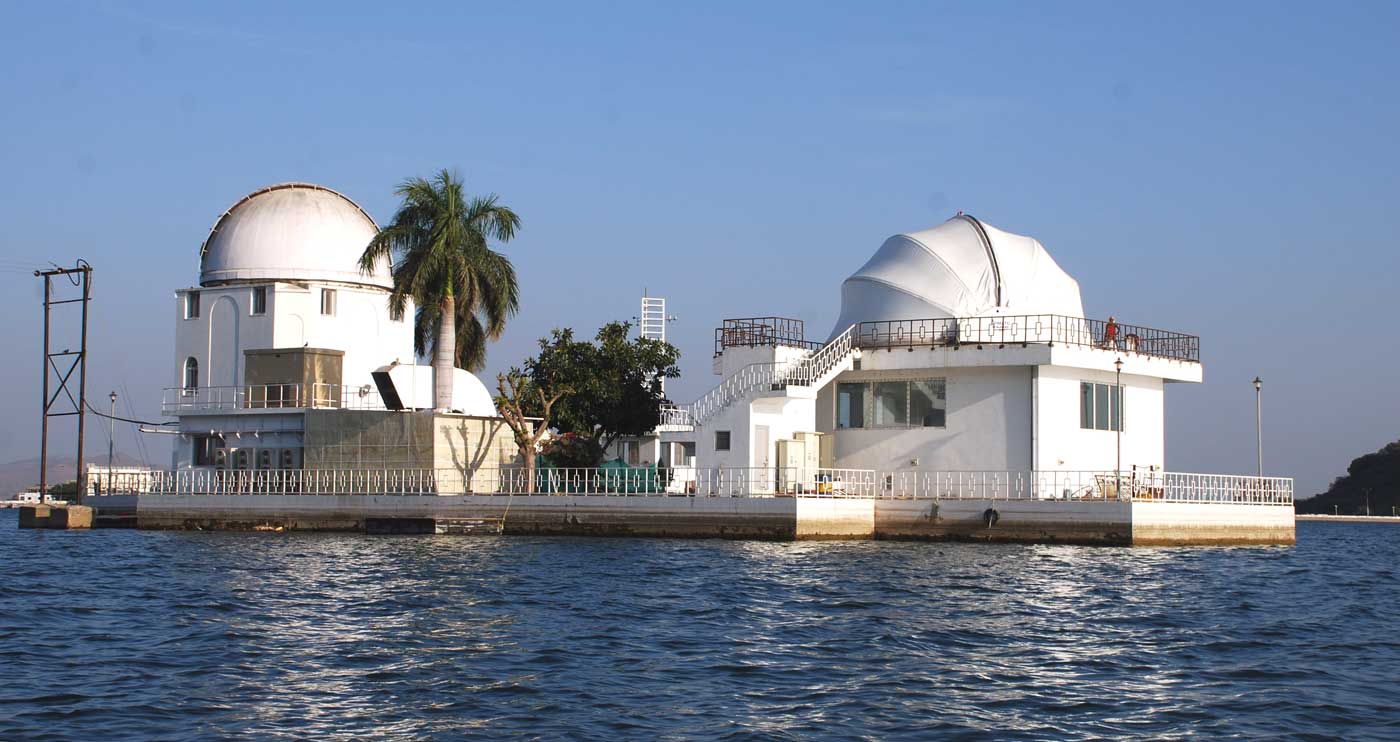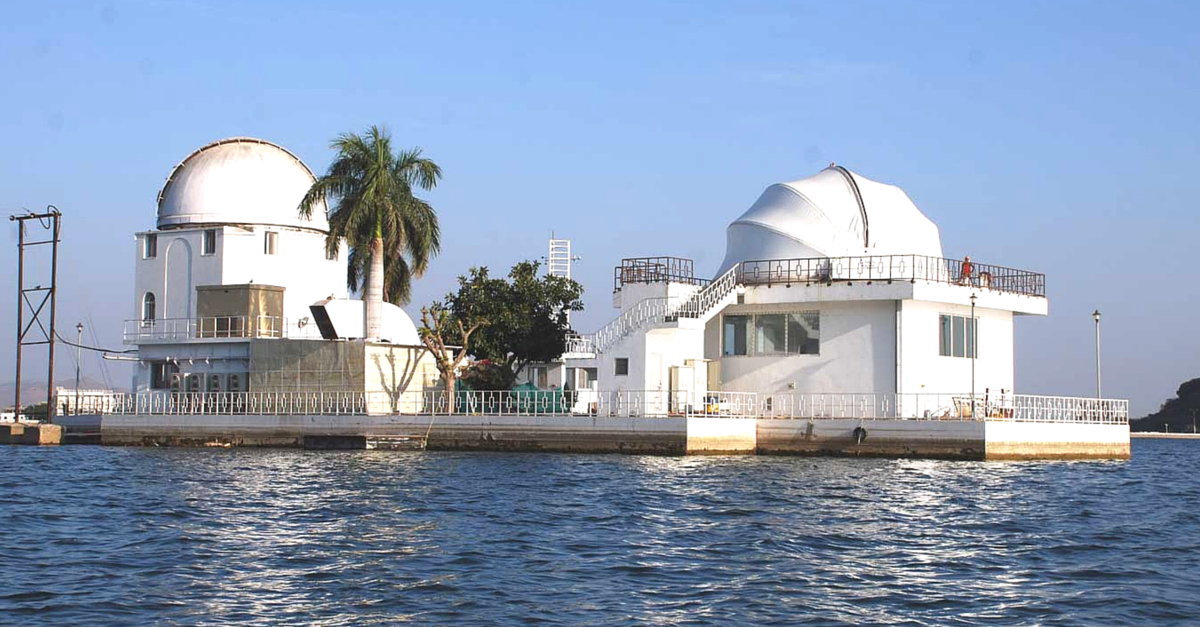MAST, a telescope for detailed study of the Solar activity is finally operational in Udaipur after a year long tests. Udaipur Solar Observatory is located on an island in the middle of Lake Fatehsagar of Udaipur.
Udaipur Solar Observatory (USO) of Physical Research Laboratory (PRL) has recently operationalised Multi Application Solar Telescope (MAST), a telescope for detailed study of the Solar activity including its magnetic field.

PRL is an autonomous unit of the Department of Space. Situated on an island in the middle of Lake Fatehsagar of Udaipur, USO has favourable sky conditions for solar observations. The heating of surface layer is decreased by the water body surrounding the telescope. This further reduces the instability in the air mass and enhances the image quality and seeing capacity of the telescope.
MAST is an off-axis Gregorian-Coude telescope with a 50 cm aperture and a collapsible dome made of tensile fabric.
Bottom row: Chromospheric (left) image of a prominence seen off the solar limb in H-alpha and the corresponding photospheric (right) image in G-band wavelengths taken on 05 June 2015, 04:13 UT.
MAST was being tested by USO for onsite acceptance for over an year and the test results were then examined by experts after which the telescope was made operational one June 16, 2015.
It is built by Mechanical and Optical Systems (AMOS) of Belgium and will be used to measure vector magnetic fields of active regions at different heights of the solar atmosphere. It will also be used to study seismic effects of solar flares.
Some test images taken during the trial runs of MAST include those taken with H-alpha and G-band filters. Features like H-alpha enable the telescope to observe features in the sun’s atmosphere including solar prominences.
All pics: isro.gov.in
Like this story? Or have something to share? Write to us: contact@thebetterindia.com, or connect with us on Facebook and Twitter (@thebetterindia).
If you found our stories insightful, informative, or even just enjoyable, we invite you to consider making a voluntary payment to support the work we do at The Better India. Your contribution helps us continue producing quality content that educates, inspires, and drives positive change.
Choose one of the payment options below for your contribution-
By paying for the stories you value, you directly contribute to sustaining our efforts focused on making a difference in the world. Together, let's ensure that impactful stories continue to be told and shared, enriching lives and communities alike.
Thank you for your support. Here are some frequently asked questions you might find helpful to know why you are contributing?

